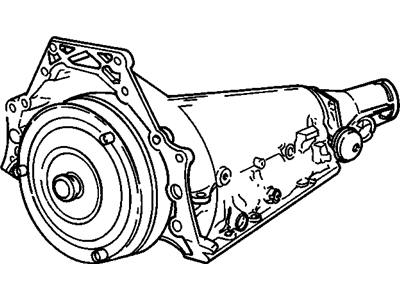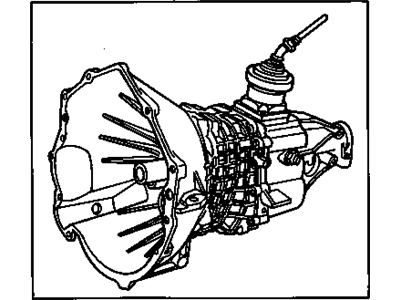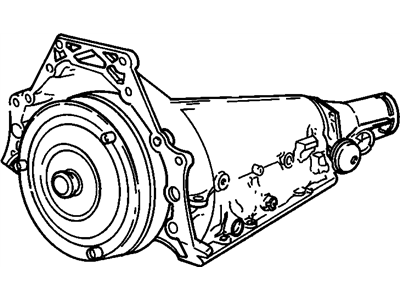
My Garage
My Account
Cart
Genuine GMC Jimmy Transmission Assembly
Trans Assembly- Select Vehicle by Model
- Select Vehicle by VIN
Select Vehicle by Model
orMake
Model
Year
Select Vehicle by VIN
For the most accurate results, select vehicle by your VIN (Vehicle Identification Number).
81 Transmission Assemblies found
GMC Jimmy Transmission Asm, Auto (Re manufactured)
Part Number: 24201017$2316.69 MSRP: $2612.38You Save: $295.69 (12%)Ships in 1-3 Business DaysGMC Jimmy Transmission Asm, Auto (4Shd) (Re manufactured)
Part Number: 8688976$2254.56 MSRP: $2542.09You Save: $287.53 (12%)Ships in 1-3 Business DaysGMC Jimmy Transmission Asm, Auto (4Tbd) (Re manufactured)
Part Number: 8688978$2254.56 MSRP: $2542.09You Save: $287.53 (12%)Ships in 1-3 Business DaysGMC Jimmy Transmission Asm, Auto (Re manufactured)
Part Number: 8689978$2254.56 MSRP: $2542.09You Save: $287.53 (12%)Ships in 1-3 Business DaysGMC Jimmy Transmission Asm, Auto (Re manufactured)
Part Number: 8689977$2316.69 MSRP: $2612.38You Save: $295.69 (12%)Ships in 1-3 Business DaysGMC Jimmy Transmission Asm, Auto (Re manufactured)
Part Number: 8691932$2316.69 MSRP: $2612.38You Save: $295.69 (12%)Ships in 1-3 Business DaysGMC Jimmy Transmission, Auto(Goodwrench Remanufacture)
Part Number: 24216088$2371.94 MSRP: $2674.88You Save: $302.94 (12%)GMC Jimmy Transmission Assembly, Man (Nv3500)
Part Number: 15067323$733.85 MSRP: $737.91You Save: $4.06 (1%)
| Page 1 of 5 |Next >
1-20 of 81 Results
GMC Jimmy Transmission Assembly
Each OEM GMC Jimmy Transmission Assembly we offer is competitively priced and comes with the assurance of the manufacturer's warranty for the part. Furthermore, we guarantee the speedy delivery of your orders right to your doorstep. Our hassle-free return policy is also in place for your peace of mind.
GMC Jimmy Transmission Assembly Parts Questions & Experts Answers
- Q: How to remove the Transmission Assembly on GMC Jimmy?A:Disconnect the negative cable from the battery, raise the vehicle and support it securely on jackstands, drain the transmission fluid and reinstall the pan, unplug all electrical connectors, disconnect the shift cable, remove the driveshaft and, if equipped with 4WD, the front driveshaft as well, remove the transfer case if applicable, relieve the fuel system pressure and disconnect the fuel line fittings, remove the rear transmission mount-to-crossmember nut(s), remove the cross member-to-frame bolts, remove any exhaust components that will interfere with transmission removal, remove the starter motor, remove the torque converter cover, mark the torque converter and the driveplate for proper reinstallation, remove the drive plate-to-torque converter bolts while turning the crankshaft for access, support the engine with a jack using a block of wood under the oil pan, support the transmission with a jack designed for this purpose and use safety chains for stability, raise the transmission enough to allow removal of the cross- member, detach the fuel line and wiring harness brackets from the transmission, remove the transmission-to-engine bolts, remove the transmission dipstick tube, lower the transmission slightly and disconnect and plug the transmission fluid cooler lines, remove the transfer case shifter, move the transmission to the rear to disengage it from the engine block dowel pins ensuring the torque converter is detached from the driveplate, and secure the torque converter to the transmission. For installation, ensure the torque converter hub is securely engaged in the pump, raise the transmission into position while keeping it level to prevent the torque converter from sliding out, connect the transmission fluid cooler lines, align the marks on the torque converter and driveplate, move the transmission forward until the dowel pins engage with the bell housing holes, install and securely tighten the transmission housing-to-engine bolts, install and tighten the drive plate-to-torque converter bolts to specifications, install the crossmember and lower the mounting stud into its hole while tightening the bolts and nuts securely, remove the jacks supporting the transmission and engine, install the dipstick tube, install the starter motor, connect the shift linkage or cable, plug in the transmission wire harness connectors, install the torque converter cover, install the transfer case if equipped with 4WD, install the driveshaft(s), install the shift linkage or cable, reinstall any exhaust system components that were removed or disconnected, lower the vehicle, fill the transmission with the specified fluid, run the engine, and check for fluid leaks.
Related GMC Jimmy Parts
Browse by Year
2001 Transmission Assembly 2000 Transmission Assembly 1999 Transmission Assembly 1998 Transmission Assembly 1997 Transmission Assembly 1996 Transmission Assembly 1995 Transmission Assembly 1994 Transmission Assembly 1993 Transmission Assembly 1992 Transmission Assembly 1991 Transmission Assembly 1990 Transmission Assembly 1989 Transmission Assembly 1988 Transmission Assembly 1987 Transmission Assembly 1986 Transmission Assembly 1985 Transmission Assembly











